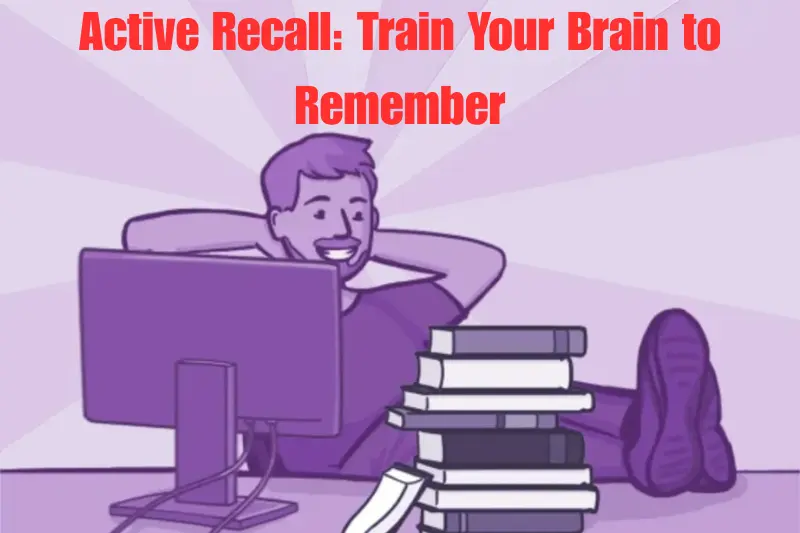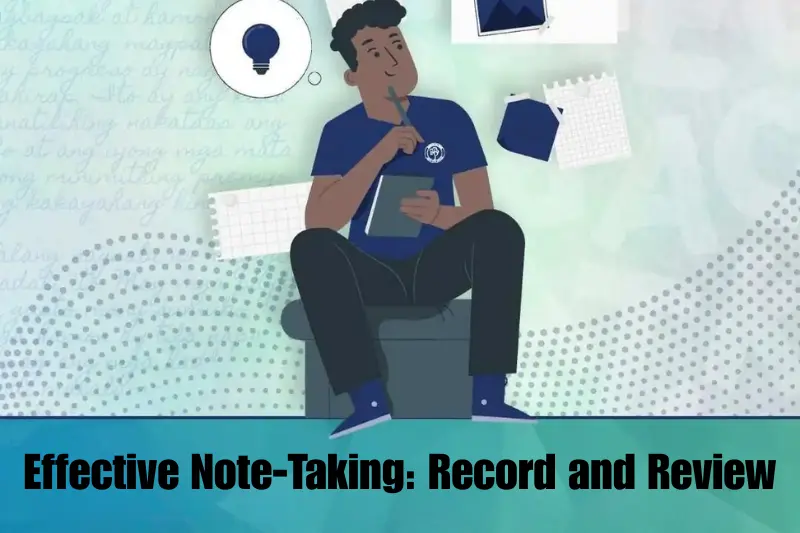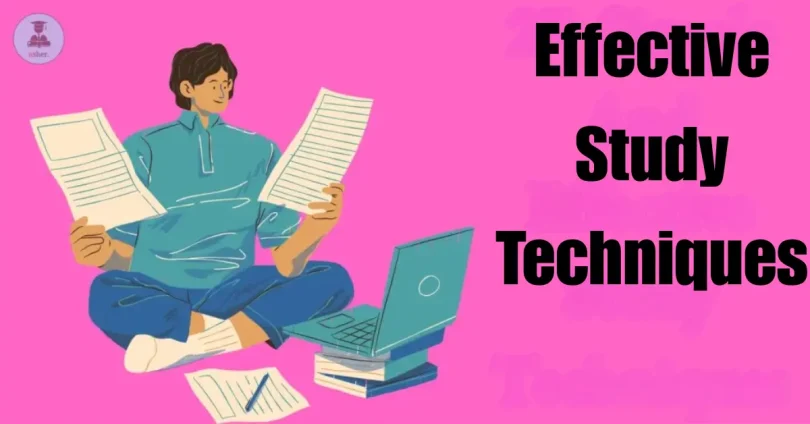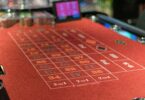Success in education and self-learning doesn’t only rely on the number of hours you spend studying—it depends largely on the methods you use. Simply reading textbooks or passively reviewing notes isn’t enough to achieve lasting results. To truly excel, you need to apply proven strategies that enhance comprehension and memory.
That’s where Effective Study Techniques come into play. These techniques are designed to help you learn smarter, retain information longer, and perform better academically.
In this comprehensive guide, we’ll explore the most Effective Study Techniques that can significantly improve your learning process, boost your academic performance, and help you achieve your goals.
1. Active Recall: Train Your Brain to Remember

What Is Active Recall?
Active recall is the process of actively stimulating your memory during learning. Instead of passively re-reading notes or textbooks, this method pushes you to remember information from scratch.
How to Practice Active Recall:
- Close your book: After reading a topic, close the book and write down or recite everything you remember.
- Use flashcards: Create flashcards with questions on one side and answers on the other. Digital tools like Anki, Quizlet, and Brainscape are helpful.
- Teach the concept: Pretend you’re teaching the material to someone else. If you can explain it clearly, you’ve truly understood it.
Why It Works:
Studies in cognitive psychology show that the act of recalling information reinforces memory and strengthens neural pathways—making it easier to remember next time.
You may also like to read this:
10 Must-Know Exam Preparation Tips For Success
How To Focus While Studying: Easy Tips For Staying On Track
Top 15+ Study Hacks For Better Grades: Improve Your Focus
Best eBooks For Students | Smart Learning Guide 2025
Best Reading Lists For Beginners | Start Reading Today
Top 10 Time Management For Students: Balance School And Life
2. Spaced Repetition: Spread Out Your Study Sessions
What Is Spaced Repetition?
Spaced repetition involves reviewing information over increasing intervals instead of cramming it all at once. This method is rooted in the “forgetting curve,” which describes how we forget information over time without reinforcement.
How to Use It:
- Create a review schedule: Revisit your notes after 1 day, 3 days, 7 days, 14 days, and so on.
- Use digital tools: Apps like Anki use an algorithm to prompt you to review material just before you’re likely to forget it.
Why It Works:
Spaced repetition improves long-term memory by combating the natural forgetting curve, ensuring information is retained for weeks, months, or even years.
3. The Pomodoro Technique: Study in Short Bursts
What Is the Pomodoro Technique?
This is a time management method that encourages focused work sessions of 25 minutes followed by a short break. It helps avoid burnout and maintains consistent energy.
Steps to Use It:
- Choose a task to work on.
- Set a timer for 25 minutes (one Pomodoro).
- Work with full concentration—no distractions.
- Take a 5-minute break.
- After four Pomodoros, take a 15-30 minute longer break.
Why It Works:
The brain stays fresh and focused during short, structured periods. Regular breaks also improve concentration and reduce fatigue.
4. Interleaved Practice: Mix It Up
What Is Interleaved Practice?
Instead of studying one subject or topic at a time (blocked practice), interleaved practice mixes multiple subjects or problem types in a single session.
How to Do It:
- Alternate topics: Study math for 20 minutes, then switch to history or another subject.
- Mix problem types: Practice different math operations or writing styles in the same session.
Why It Works:
This technique strengthens your brain’s ability to choose and apply the right method when solving different problems. It builds flexibility and deep understanding.
5. Elaboration: Connect New and Old Knowledge
What Is Elaboration?
Elaboration is the act of adding meaning to new information by connecting it to things you already know.
How to Practice:
- Ask “Why?” and “How does this work?” as you study.
- Create analogies (e.g., comparing the heart to a pump).
- Relate theories to real-life situations.
Why It Works:
By linking new knowledge to existing memories, elaboration makes learning stick. It deepens understanding and aids retrieval.
6. Effective Note-Taking: Record and Review

Strategies:
- Cornell Method: Divide your paper into three sections—notes, cues (keywords), and summary.
- Outlining: Use bullet points and sub-bullets to organize main ideas and details.
- Mind Mapping: Create diagrams with branches for subtopics and visual elements.
Why It Works:
Structured notes help you understand relationships between concepts and make reviewing easier.
7. The Feynman Technique: Teach to Learn
What Is It?
Named after Nobel Prize-winning physicist Richard Feynman, this technique involves explaining a concept in simple terms—as if teaching it to a child.
Steps:
- Pick a concept and study it.
- Write or say it in your own words.
- Identify gaps in your explanation.
- Re-learn and simplify again.
Why It Works:
Teaching a topic forces you to clarify your understanding and exposes areas where you’re unsure.
8. Mind Mapping: Visualize the Information
What Is Mind Mapping?
Mind maps are visual diagrams that represent ideas, concepts, or topics around a central theme.
How to Create One:
- Start with a central idea in the middle of the page.
- Branch out into subtopics.
- Add keywords, images, and colors to stimulate visual memory.
Why It Works:
Visual learners benefit greatly from mind maps. They help break down complex information into digestible visuals and show connections between concepts.
9. Practice Testing: Self-Test Regularly
What Is It?
Instead of passively re-reading, practice testing involves answering questions to gauge your knowledge.
How to Do It:
- Create quizzes from your notes.
- Use past exam papers.
- Test yourself using flashcards or apps.
Why It Works:
It reinforces memory and builds confidence. Practice testing helps you identify weak spots and prepares you for actual exams.
10. Build Healthy Study Habits
Sleep, Diet, and Exercise:
- Sleep: Aim for 7-9 hours of quality sleep. Memory consolidation occurs during sleep.
- Nutrition: Eat brain-friendly foods like nuts, fish, fruits, and vegetables.
- Exercise: Even light exercise like walking improves brain function and reduces stress.
Organize Your Environment:
- Keep your desk clean and organized.
- Eliminate distractions—put your phone away or use focus apps.
- Choose a quiet, well-lit study space.
Set SMART Goals:
Make your goals Specific, Measurable, Achievable, Relevant, and Time-bound. Break large projects into smaller tasks.
Common Mistakes to Avoid
- Cramming: Leads to short-term memory only. Always start studying in advance.
- Multitasking: Divides your attention and reduces learning efficiency.
- Passive Review: Re-reading without testing or application isn’t effective.
- Distractions: Studying with background noise, phones, or social media can ruin focus.
Conclusion: Achieve More with Effective Study Techniques
Success in learning isn’t about studying harder—it’s about studying smarter. By using effective study techniques like active recall, spaced repetition, and the Pomodoro method, you can improve focus, boost retention, and deepen understanding. Supporting strategies like mind mapping, elaboration, and self-testing further enhance your performance.
Combine these methods with healthy habits and a distraction-free environment, and you’ll be well on your way to academic success. Embrace effective study techniques today to learn more efficiently and achieve your goals with confidence.
FAQs
1. What are effective study techniques?
Effective study techniques are scientifically proven methods that help improve learning efficiency, memory retention, and academic performance. These include active recall, spaced repetition, the Pomodoro technique, mind mapping, and more.
2. Which study technique is best for long-term memory?
Spaced repetition is considered the best for long-term memory. It helps you review information at strategically timed intervals to strengthen recall and reduce forgetting.
3. How does active recall improve studying?
Active recall forces your brain to retrieve information from memory, strengthening neural connections and improving long-term retention. It’s more effective than passive reading or highlighting.
4. What is the Pomodoro technique and how does it help?
The Pomodoro technique involves studying in focused 25-minute sessions followed by 5-minute breaks. It boosts concentration, reduces mental fatigue, and increases productivity.
5. Is it better to study one subject at a time or multiple?
Using interleaved practice—studying different subjects or topics in the same session—has been shown to enhance problem-solving and memory by challenging your brain to switch between concepts.







